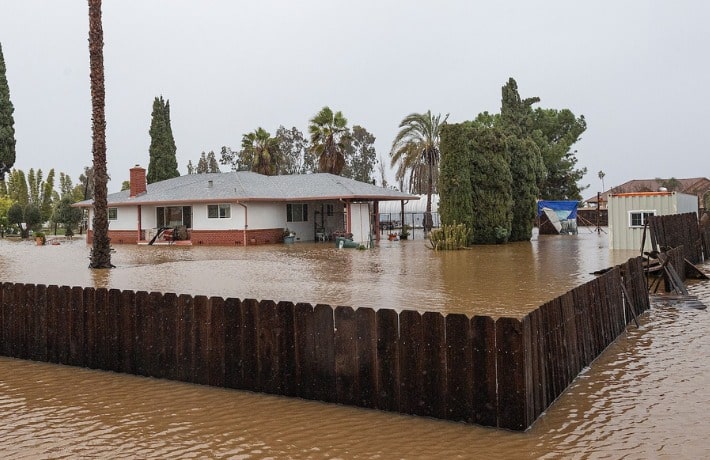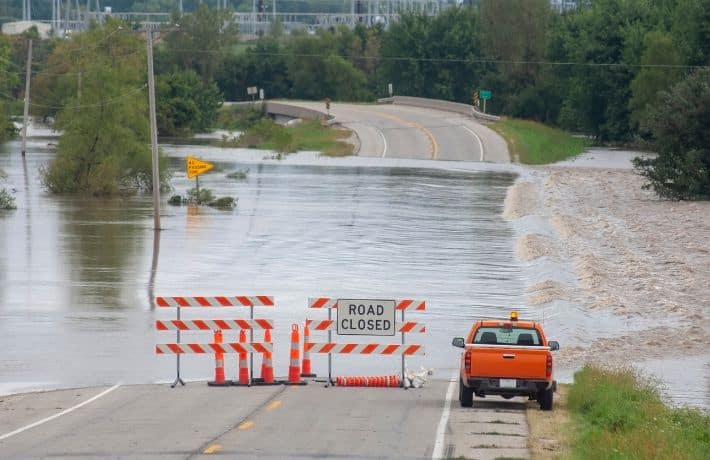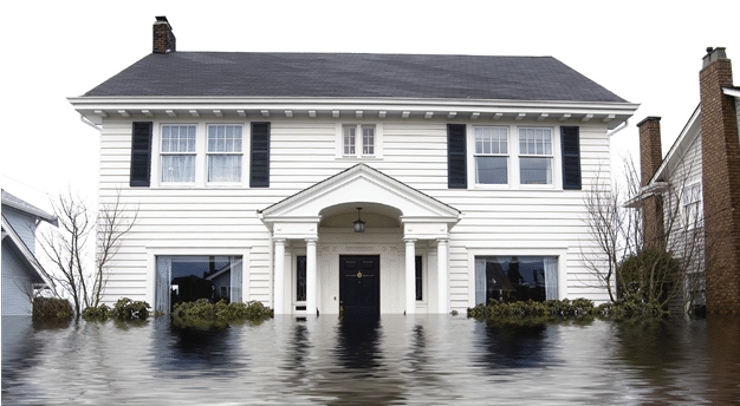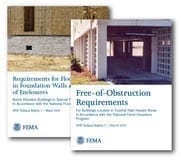Updated CRS Report Makes Recommendations on NFIP Affordability

Photo credit: California Department of Water Resources, January 11, 2023
The National Flood Insurance Program currently insures just under 5 million structures in more than 22,000 communities throughout the United States, and most of the remaining structures do not have insurance to protect them against flood risk, according to a January 2023 report from the Congressional Research Service (CRS). This large insurance gap may increase if policyholders drop their coverage because they feel that premiums are too expensive.
The introduction of a means-tested NFIP affordability program has been under consideration by Congress for years. However, FEMA does not currently have the authority to implement an affordability program, nor does the NFIP’s current rate structure provide the funding required to support one. If an affordability program were to be funded from NFIP funds, this would require either raising flood insurance rates for NFIP policyholders or diverting resources from another existing use. Alternatively, an affordability program could be funded fully or partially by congressional appropriations.
A central question in any reform of the NFIP is who should bear the costs of floodplain occupancy in the future: individual policyholders (the insured), federal taxpayers, uninsured flood victims, or some combination of these.
A means-tested affordability program could be implemented in a number of different ways, which may differ in how to measure when a premium might impose a cost burden on a policyholder. Means-tested affordability assistance could take a capped-premiums approach, an income-based approach, a housing burden-based approach, a combined income- and housing burden-based approach, or a community characteristics approach.
In addition, an affordability program is only one possible way of reducing the cost burden to policyholders.
In Options for Making the National Flood Insurance Program More Affordable, an update to the 2021 report by the same name, the CRS’ Diane Horn outlines a range of policy options Congress could consider to reduce the amount that NFIP policyholders pay, such as
- reducing the amount that policyholders pay through the introduction of a mean-tested affordability program;
- reducing the amount that individual policyholders pay by increasing participation in the NFIP, which could distribute program costs amongst a larger population than at present;
- increasing income to the NFIP, which could be used to reduce policyholders’ contributions to the costs of the program;
- reducing the NFIP debt and thus the amount that policyholders pay in interest on the debt; or
- increasing mitigation activities, which may reduce flood damages and thus flood claims, which could reduce the amount that policyholders have to pay for claims.
The report also includes a table summarizing past legislative proposals related to NFIP affordability. Download the report.
Options for Making the National Flood Insurance Program More Affordable is just one of four NFIP-related reports released by the CRS in January. Here are the other three.
Introduction to the National Flood Insurance Program (NFIP)
Updated January 6, 2023
A Brief Introduction to the National Flood Insurance Program
Updated January 4, 2023
What Happens If the National Flood Insurance Program (NFIP) Lapses?
Updated January 4, 2023




